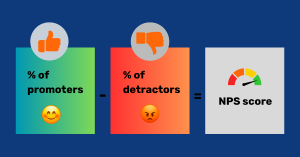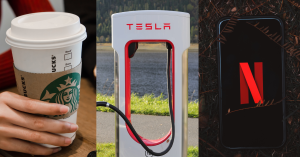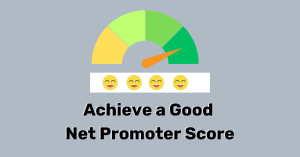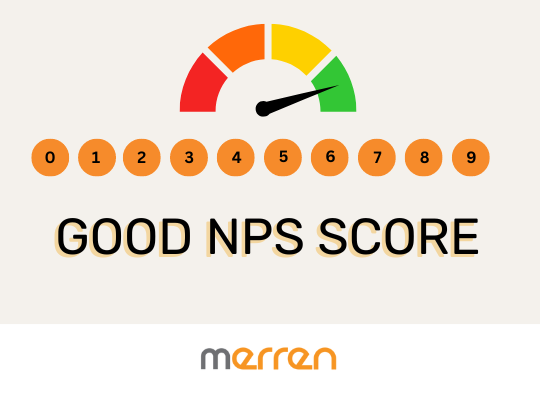Customer recommendations can positively influence future sales. This is when people are willing to recommend your brand purely out of a good experience. This recommendation is measured by Net Promoter Score (NPS). NPS is a gold standard metric to gauge customer advocacy and loyalty. This simple yet powerful metric is a cornerstone of customer experience (CX) strategies across industries.
What determines a ‘good’ Net Promoter Score varies across industries. It depends on market maturity, customer expectations, and geographical and cultural factors.
Key overview in this guide:
- What a good Net Promoter Score means in 2025.
- Updated NPS benchmarks by industry (with 2024 vs 2025 comparisons)
- Regional differences among U.S., Europe & Asia (don;t miss these benchmarks)
- Why benchmarks are shifting this year (and what’s driving the change)
- Actionable tips to set realistic goals and improve your NPS
What is Net Promoter Score (Quick Refresher)?
Net Promoter Score was introduced in 2003 by Fred Reichheld, a partner at Bain & Company.
The problem? Businesses were overwhelmed by complex customer satisfaction surveys. These surveys failed to translate into clear, actionable insights.
The solution? Reichheld created a simple, actionable metric that could reliably predict customer loyalty and, by extension, business growth.
His team identified that one key question:
“How likely are you to recommend our product or service to a friend or colleague?”.
It was strongly correlated with customer loyalty and future behaviour. This question became the foundation of the Net Promoter System methodology.
Customers respond to an 11-point NPS survey scale (scale of 0-10) , which categorizes them into three groups:
- Promoters (9-10): Promoters are loyal customers who drive growth by promoting brands they prefer.
- Passives (7-8): Passives are not enthusiastic customers but they’re vulnerable to competitors. However, they are just satisfied enough to use your products/services.
- Detractors (0-6): Detractors are unhappy customers. Dissatisfied customers can damage your brand through negative feedback, digital word-of-mouth.

The Net Promoter Score (NPS) formula:
NPS = (% Promoters) – (% Detractors)
The scores range from -100 to +100, where a higher score indicates a healthier customer base.
Why does Net Promoter Score matter in 2025?
The Net Promoter Score is much more than just a number. It’s a reflection of your customers’ emotional connection to your brand.
- Predicts growth: Studies show that a high NPS correlates with revenue growth since promoters are more likely to repurchase and refer.
- Enhances CX strategies: By identifying promoters and detractors, businesses can refine their customer engagement strategies.
- Competitive benchmarking: NPS allows companies to see where they stand compared to industry peers.
- Actionable insights: Open-ended follow-up questions reveal the “why” behind the scores. You can make targeted improvements.
What Counts as a “Good” Net Promoter Score in 2025?
While NPS ranges from -100 to +100, their interpretation depends on your industry and market.
General guidelines for NPS metrics
- Below 0: Concerning, indicates more detractors than promoters
- Above 0: More promoters than detractors, indicating a healthy baseline.
- 20+: Indicates that people are gradually favouring your brand.
- 50+: A strong score that signals exceptional customer loyalty.
- 70+: World-class performance often seen in industry leaders.
Example: Apple is known for its memorable user experience right from the packaging to product usage. The tech giant consistently achieves NPS scores above 70. Meanwhile, average scores for industries like financial services or healthcare are significantly lower. It can reflect the unique challenges of those sectors.
What’s Driving Benchmark Shifts in 2025 (and Beyond)?
- AI in Customer Support: Faster resolutions improve promoter count.
- Personalization at Scale: Brands using customer data well see higher NPS.
- Sustainability Expectations: Younger consumers reward eco-friendly brands with higher loyalty.
- Price Sensitivity: Inflation pressures make customers less forgiving. So NPS can drop if pricing feels unfair.
- Digital Experience Quality: App performance, chatbot UX, and omnichannel support directly impact NPS.
How to Interpret Score from an NPS Survey?
The NPS survey results come with a context. Standalone numbers are less informative without understanding their implications and complementary metrics.
NPS in relation to other CSAT and CES
To get a fuller picture of your customer experience, pair NPS with:
- Customer Satisfaction Score (CSAT): Measures satisfaction with specific touchpoints or experiences.
- Customer Effort Score (CES): Gauges how much effort a customer must exert to resolve issues or achieve outcomes.
Example:
If your NPS is 50 but your CES is low, it could mean customers love your product but struggle with support services. Addressing this gap can improve overall loyalty.
Calculate Your Net Promoter Score For FREE
2025 Industry-Specific Net Promoter Score Benchmarks (vs 2024 Benchmarks)
Here’s how industries stack up in 2025, with year-over-year shifts based on various benchmark studies:
Industry | 2024 Avg NPS | 2025 Avg NPS | Good Range | Top Performers | Example Companies |
SaaS / Tech | 38 | 42 | 40–55 | 60+ | Zoom, HubSpot |
E-Commerce / Retail | 32 | 36 | 35–50 | 55+ | Amazon, Sephora |
Financial Services | 34 | 37 | 35–50 | 55+ | American Express, USAA |
Healthcare / Telehealth | 27 | 31 | 30–45 | 50+ | Teladoc |
Hospitality / Travel | 39 | 44 | 40–55 | 60+ | Marriott, Airbnb |
Telecom | 14 | 19 | 20–30 | 40+ | T-Mobile |
Automotive | 41 | 45 | 40–55 | 60+ | Tesla, Toyota |
B2B Services | 29 | 33 | 30–45 | 50+ | Accenture |
Bonus tip: Make sure to compare net promoter score with the competitors in your industry for accurate benchmarking on a yearly basis. Comparing your score with your peers will tell you how well your brand is doing.
Regional differences in NPS benchmarks
Net Promoter Scores tend to differ among similar industries based on regions. This is driven by cultural changes, demographic impact and expectations from people.
- North America (U.S. & Canada): Higher expectations mean slightly lower average NPS (35–40).
- Europe: EU enforces stricter privacy/data laws. This drives cultural skepticism to reduce NPS to be low as 25-35.
- Asia (India, SE Asia): Rapid digital adoption leads to higher NPS in e-commerce & fintech. Scores around 40–50.
- Latin America: Stronger customer relationships drive loyalty scores higher in the range of 45–55.

Example: brands with good Net Promoter Scores in 2025
Here are some globally known brands that have kept their NPS metrics at an impressive benchmark in 2025 as per their industries.
Tesla | 97 |
Walmart | 30 |
T Mobile Inc | 82 |
LoanBoox | 80 |
PayPal | 65 |
Starbucks | 30 |
MTN | 75 |
Amazon | 73 |
Nutanix | 92 |
Apple | 61 |
Southwest Airlines Co | 47 |
Nimble | 85 |
Netflix | 43 |
Why do Net Promoter Score benchmarks vary?
- Customer expectations: In industries like hospitality, customers expect personalized, seamless experiences, which drives higher average scores.
- Nature of interactions: Healthcare and financial services often involve sensitive, high-stakes interactions that make achieving high NPS more challenging.
- Market saturation: Industries with intense competition (e.g. retail) often see more variability in NPS, as differentiation plays a significant role.
- Regional differences: Cultures across Asia will have growing expectations over markets set in North America. The same industry in Asia may have a higher NPS over those in Europe or North America.
How to Improve Your Net Promoter Score?
Strategies for retaining Promoters (scores 9-10)
- Incentivize continued loyalty: Implement loyalty programs that reward promoters with discounts, exclusive offers, or early access to new products and services. Encourage customers to for referrals to increase community participation. Sometimes, companies can also offer surprise incentives as a reward. Example: Airlines can choose a regular flyer with maximum air-miles. They can upgrade the customer with a business class seat upgrade.
- Actively engage on social media: Respond to user generated posts and feature their testimonials to strengthen the brand image.
- Invite to beta test: Involve promoters in beta testing new products or features. Use their feedback to improve and refine current offerings. This will make them feel valued to be a part of the inner circle.
Strategies for turn Passives to Promoters (scores 7 or 8)
- Initiate conversation: Talk to your customers about what is different or better in your brand. Learn about their requirements to understand what category of audience, passives fall under.
- Close the feedback loop: Sometimes the passives refuse to turn into advocates due to a genuine concern or shortfall on the promise. Understand this and address it. Communicate back to the customers of the changes you have made based on their feedback. This needs to be implemented on a continuous basis to make them feel valued.
- Nudge them for reviews: Asking for reviews can be a meaningful way to solicit advocacy. Nudge them by telling them why their testimonials matter and how it would help the brand within their network.
Strategies to protect reputation from Detractors (scores 0-6)
- Rapid response: Implement a system to swiftly respond to negative feedback. Empathetic response can sometimes turn a detractor into a passive or even a promoter. Offer solutions or compensation for their poor experience. This might include discounts, refunds, or other gestures that show goodwill.
- Follow-up post resolution: Ensure that the grievances are resolved to their satisfaction.Follow up to inform them about the steps taken to address their concerns. Transparency can rebuild trust.
- Touchpoint check-ins: After addressing first initial complaints, check in with detractors periodically to ensure they are satisfied with the solutions. You can use Customer Effort Score to assess the effort they went through while the problem was getting resolved.
- Focus on creating better experiences: Make sure that the company creates better, improved experiences for previous detractors. This can reinstate their faith in the brand and gain their trust.
Real-World Examples of Net Promoter Score Success
- Airbnb (Hospitality): Airbnb used NPS feedback to improve its host onboarding process, addressing common pain points and boosting host satisfaction. This led to a notable increase in their NPS.
- Zoom (Tech): By simplifying its user interface and providing 24/7 support, Zoom managed to significantly improve its NPS during the pandemic.
- Apple Inc: Apple customer service teams do not use pushy sales. They listen to the customer’s problems and suggest solutions around it. Even when people do not purchase, they are still invited to return for a free demo.
- USAA: USAA offers a quick customer redressal system of queries. This makes 64% of their customer base very satisfied with their service (which is more than the redressal system compared to other banks).
Good vs. great vs. world-class NPS
Not all “good” scores are equal. The key is to make sure you get an upward score, not a perfect score. Here’s how to frame your performance:
Score Range | Label | What It Means |
0 and above | Favourable | The brand is beginning to be a crowd favourite |
20–30 | Good | The brand has a few critics but more brand advocates |
30-50 | Great | The brand is delighting customers consistently |
50–70 | Excellent | The brand is delivering standout experiences |
70+ | World-class | The brand now has a loyal fan base |
Tips to Maintain a Good Net Promoter Score
What is NPS decay?
Net Promoter Score (NPS) is dynamic and reflects the ongoing experiences and sentiments of your customers. However, the score will naturally “decay” over time. This decay occurs because customer expectations evolve, market conditions change, and competitors improve their offerings. A high NPS today does not guarantee a high NPS tomorrow if efforts to maintain and improve are not consistent or sustained.
What causes NPS to decay?
- Shifting customer expectations: As new technologies emerge and industry standards rise, customers begin to expect more. What delighted customers last year may only satisfy them this year, or worse, it may disappoint them.
- Competitor innovations: When competitors introduce new features, services, or improved customer experiences, your previously satisfied customers might reassess their loyalty based on competitor’s benchmarks.
- Market dynamics: Changes in the economic environment, such as recessions or fluctuations in consumer spending power, can alter customer perceptions and priorities. This impacts how they rate their likelihood to recommend.
- Internal stagnation: If a company fails to innovate or becomes complacent, its offerings may become outdated. Without continual improvement, customer satisfaction and their NPS scoring will naturally decline.

How to Improve Net Promoter Score?
Improving NPS metrics require a systematic approach that combines listening to feedback, taking action, and refining internal processes.
1. Close the customer feedback loop
Keep the teams ready in place to intercept negative feedback on websites, social media channels or on Google reviews. Get in touch with the reviewer and offer feasible solutions to ease the impact of the problem. Additionally, make sure you humanize the process and offer empathy.
2. Train and empower customer support teams
Your frontline teams play a pivotal role in customer satisfaction. Invest in continuous training to improve communication and problem-solving skills. Empower teams to handle issues and closing tickets without passing it on to the hierarchy. This autonomy can clear backlogs and offer a better customer experience.
3. Use data to identify and address pain points
Open-ended survey responses give insights into people’s feelings, experiences and unfiltered opinions. Assess qualitative responses to uncover recurring issues using Merren’s sentiment analysis. Introduce pulse surveys to track real-time sentiment. Use customer journey mapping to identify friction points and address them.
4. Offer personalized customer experiences
People value personalized interactions. For example, after using a car for 1000 miles, the customer might receive a complimentary check-up at a designated service point. To capture this data, leverage AI and CRM tools to tailor recommendations and communications. Reward loyalty with personalized rewards or exclusive content.
So You Have a Good Net Promoter Score. What Now?
Achieving a benchmark NPS metric can be a task. Maintaining the pinnacle of scores can be tougher in a growing market. Here is what brands can do to remain proactive with their CX strategies.
1. Net Promoter Score will not keep increasing
NPS will rise gradually and will come to halt or maintain an equilibrium. This does not mean the products are bad or the brand is losing its market hold. Loyal brand advocates sometimes no longer find it important to offer customer feedback. They just continue being happy customers.
2. Continue upgrading products or offerings
There can be two ways to look at a product. If it can be improved, it must be improved. If there is no room for improvement and sales are down, it can be replaced with a new product or offering that is relevant in the modern marketplace. This will keep current customers happy and attract potential buyers.
3. Seek intentional feedback across survey channels
Continue taking feedback from people across various touchpoints such as onboarding, post-purchase service etc. This makes people feel valued and understand that the company thrives on customer feedback, even at scale. This will make people a brand advocate.
4. Offer apt upgrades and incentives
Offering surprise upgrades or incentives can result in customer-delight. A complimentary service, an upgrade to a business class in flight, giving exclusive invitations to patrons can make people seen and valued.
Frequently Asked Questions About Net Promoter Score
1. What is the highest possible score?
The highest NPS is +100, though very few companies reach above 80.
2. How often should I measure NPS?
Quarterly or bi-annually is ideal. Some brands also run monthly pulse surveys. Focus on transactional Net Promoter Score (tNPS surveys) after major customer touchpoints (e.g. onboarding, purchase, support).
3. Should I be worried about a negative NPS score?
Not necessarily. It indicates issues that need addressing, but the insights gained from detractor feedback are invaluable for improvement.
4. What is a good NPS in SaaS in 2025?
A good SaaS NPS in 2025 is between 40–55, with top performers reaching 60+..
5. Can NPS replace other metrics?
No. NPS is most effective when used alongside metrics like CSAT and CES for a well-rounded customer experience (CX) strategy.
Conclusion
In 2025, a good Net Promoter Score depends on your industry, your region, and how quickly you adapt to customer expectations.
Use the benchmarks above to evaluate where you stand. More importantly, focus on what drives promoters in your business: closing feedback loops, improving experience, and listening in real time.
.Opt for a 14 day free trial without any credit card commitments. You can view our extensive survey templates here. Customize it as per your industry requirements.

